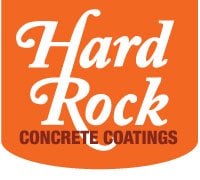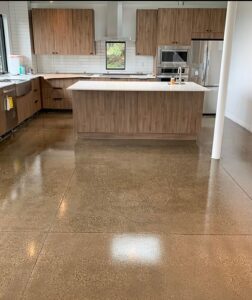The snow is starting to melt. The ice is creeping away. The temperature is rising slowly, and we’re seeing the sun more regularly. The gray ground is turning to brown mud, and little flashes of greenery are starting to appear. The spring rains will begin to wash away all the signs of winter, preparing us for the beautiful, flowery season and mild weather ahead. It’s hopeful and exciting! There’s almost nothing bad about it. Except the yard work.
Spring means a renewed effort in your yard and garage. It means clearing off mud, sweeping away dirt and cobwebs, planting flowers, fertilizing grass, and of course – spring cleaning. It’s a lot of work, and unfortunately it also means you may uncover even more projects which will need your attention. One of those projects may be damaged concrete.
We see it a lot around this time of year. Homeowners are outside doing their spring cleaning and preparation. They’re washing out their driveways, clearing off step stones and flower beds, and what they discover can shock them – cracked, crumbling, or uneven concrete. The winter months can be particularly destructive to concrete, even though concrete is an incredibly durable material. A big factor is the precipitation and freezing. Water expands when it freezes, meaning if water gets into cracks or pores in your concrete it will freeze and expand, causing more cracks and crumbling. Rock salt is also very damaging and abrasive to your concrete, so if you’ve been scattering salt to melt the ice on your concrete you may need to prepare for some damage. Combine that with extra driving, snow plowing and shoveling, and big changes in temperature and you could be facing concrete that looks a little worse for the wear.
The first step is to assess your concrete’s current status. Clear everything off your concrete garage, driveway, walkways, stepstones, and patios. Sweep away dirt and cobwebs, then spray it down (bonus points for using a power washer). Once it’s totally clean and clear, you should be able to assess the condition of your concrete. Are there cracks? Holes? Crumbling corners or sections? Does it appear to be unlevel or sagging in some areas?
If you find that your concrete DOES have some form of damage, or simply doesn’t look the way it did when you first had it poured – you should work on repairing it immediately. The damage will only continue to get worse, but repairing damaged concrete can be an easy fix. You can patch it yourself, or even better – call the affordable and trustworthy experts at Hard Rock Concrete Coatings for fast and effective concrete repair that will last. It’s not difficult or expensive, but it does make a difference in the life and appearance of your concrete.



